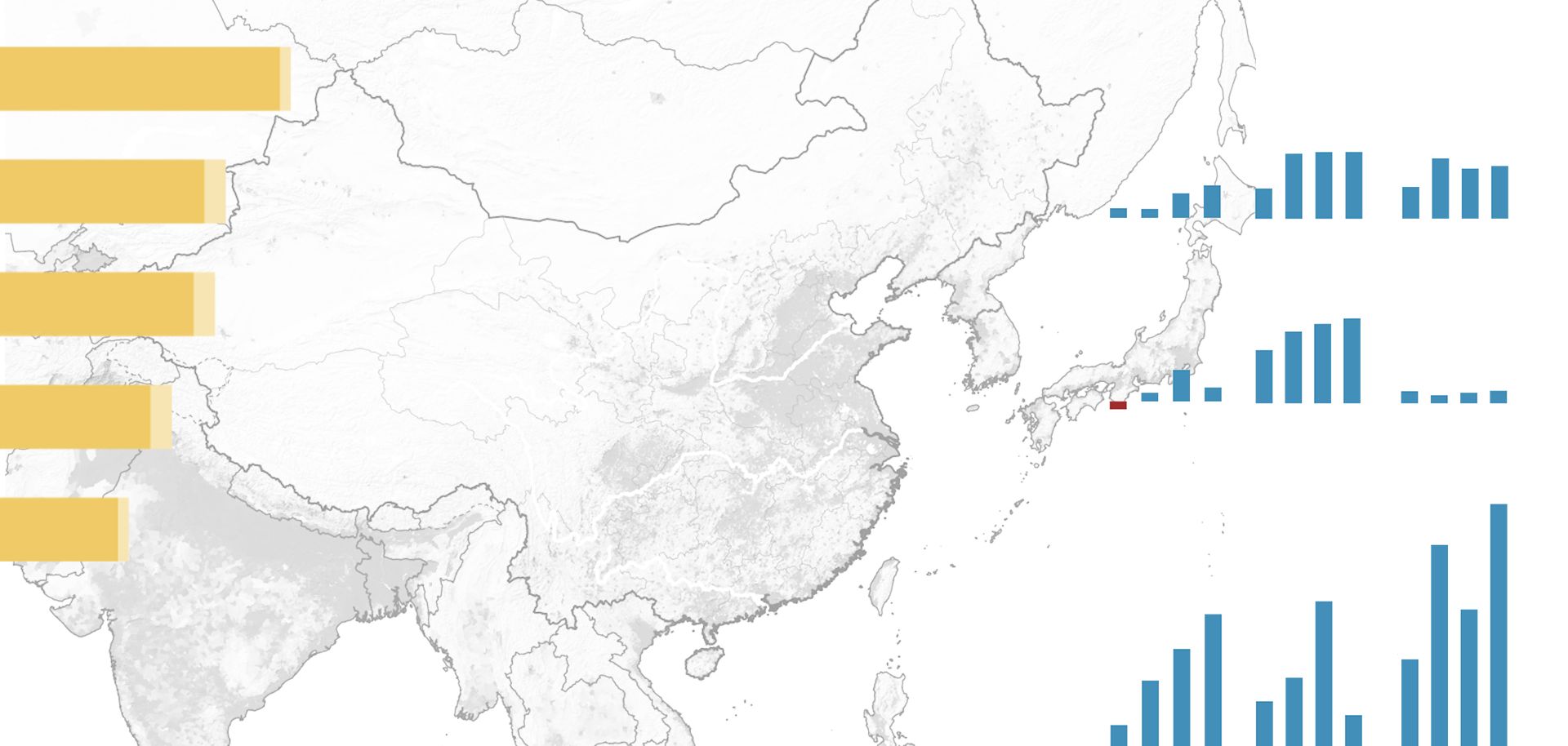
Even though India's economy is the fastest-growing in the world, job creation in the country has fallen to its lowest point since 2009. Speeding the pace of the Indian economy's shift from agriculture to manufacturing has been one of Prime Minister Narendra Modi's chief objectives since he took office in 2014. In launching his "Make in India" campaign in 2014, Modi outlined a plan to increase the manufacturing sector's share of India's gross domestic product to 25 percent by 2022 and to add 100 million more manufacturing jobs (currently, manufacturing constitutes 16 percent of GDP and employs some 50 million people). But entrenched opposition to labor and land acquisition reforms are throwing off the prime minister's timetable for reaching his ambitious goals for the sector.
According to one classical arc of economic development, as agrarian societies meet the basic needs of their people, economies transition to manufacturing before developing services sectors. The development of India's economy, however, followed a different trajectory. In 1950, three years after India achieved independence, agriculture accounted for 73 percent of its economy. As the country emerged from British colonial rule, its first prime minister, Jawaharlal Nehru, tried to implement Soviet-style industrialization to reduce the country's dependence on foreign manufactured goods. But to propel itself to modernity, India's agrarian society needed agricultural, land and education reform. In failing to make the necessary reforms, Nehru undermined his industrialization project. Since farmers were not making money, their demand for manufactured goods was low. Then, during the 1960s, the Indian government cut its investment into industry, while the dominating presence of state-owned firms stifled competition. Together, these factors impeded the country's progress toward industrialization. Today, agriculture remains the biggest source of jobs in India, employing nearly 50 percent of the labor force, though it contributes just 16 percent of GDP.
The legacy of Nehru's policies — overbearing state regulation and a byzantine regulatory system known as the "License Raj" — endured. But after a balance of payments crisis forced India to seek an emergency loan from the International Monetary Fund in 1991, things began to change. As a condition for the loan, the IMF demanded austerity measures, and then-Finance Minister Manmohan Singh began to dismantle the License Raj, the first step toward freeing the economy from overregulation. In the wake of those reforms, the country's economic growth rate effectively doubled to 6 percent. From 1980 to 2012, manufacturing — which forms three-quarters of India's industrial sector — saw its share of the economy hover around 16 percent. During the same period, the services sector's portion grew from 40 percent to 57 percent, turning the classic economic development model on its head. Now the shortcomings of that approach are catching up with India's economy.



